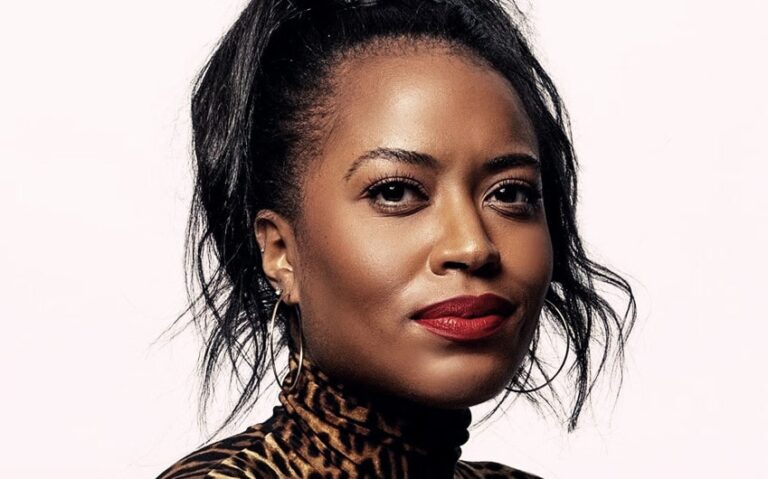Donyale Luna Net Worth: The Legacy, Influence, and Financial Story of a Fashion Pioneer
When people look back on the history of fashion, especially in the realm of diversity and representation, one name always stands out—Donyale Luna. The question of Donyale Luna net worth is an intriguing one, not because she amassed millions, but because her cultural and symbolic worth far outweighed her actual financial earnings. As the first Black supermodel to appear on the cover of British Vogue, Donyale Luna broke boundaries and redefined global beauty standards. Yet despite her fame and impact, she lived and died with relatively little material wealth. Her story is both inspirational and tragic—a reminder of how pioneering figures often pay a price for being ahead of their time.
Luna’s brief but brilliant career came during a period when the fashion industry was still deeply rooted in exclusion. She rose to international prominence in the 1960s, dazzled photographers like Richard Avedon and Salvador Dalí, and even acted in avant-garde films. But in the end, her groundbreaking visibility did not translate into long-term financial security. To understand why, you have to look beyond the gloss of magazine covers and into the structural realities of her era.
The Icon Who Redefined Beauty Standards
Born Peggy Ann Freeman in Detroit, Michigan, in 1945, Donyale Luna took on her stage name and a bold new identity as she entered the fashion world. She wasn’t just a model—she was a performance, a vision, a spectacle. Standing over six feet tall, with large, hypnotic eyes and an ethereal presence, Luna didn’t fit into any mold. That uniqueness made her both magnetic and revolutionary. In 1966, she became the first Black model to appear on the cover of British Vogue, an achievement that sent ripples through an industry that had been almost entirely white-dominated until then.
Her presence marked a turning point, not just aesthetically but politically. She challenged rigid Eurocentric beauty standards and gave hope to future generations of women of color. Luna worked with some of the most iconic photographers of the time and was part of a fast-moving, glamorous international scene that included artists, designers, and actors. She modeled in Paris, London, and New York, and rubbed shoulders with Andy Warhol, Mick Jagger, and Federico Fellini.
Despite the glamour, Donyale Luna was often misunderstood by the press and pigeonholed as eccentric or unstable. The truth was more complex. She was navigating an industry that was fascinated with her but never fully embraced her.
Fame Without Fortune—Why Her Net Worth Was Limited
Donyale Luna’s fame did not equate to financial wealth. Unlike today’s supermodels who command multimillion-dollar brand deals, Luna worked during a time when the modeling industry was far less lucrative—especially for Black women. Rates were inconsistent, contracts were often exploitative, and there was little protection or structure for models in general.
Many of Luna’s assignments paid modestly, and even when she landed high-profile magazine covers or editorials, the compensation was minimal compared to modern standards. Additionally, she worked largely in avant-garde and editorial fashion, which offered prestige but not necessarily high pay.
Systemic racism also played a role. Luna was frequently exoticized rather than respected. While she did receive attention and critical acclaim, the industry’s reluctance to fully accept her meant she didn’t benefit from the long-term partnerships and recurring campaigns that would have brought financial security. Even her attempts to break into mainstream American modeling were often met with resistance.
Lifestyle choices may have also played a part. Luna was part of the bohemian, countercultural art scene of the 1960s and 70s—a world known for its hedonism and lack of financial planning. Reports from those who knew her suggest she didn’t prioritize money, choosing instead to immerse herself in artistic expression and alternative living.
Estimating Donyale Luna’s Net Worth at the Time of Her Death
When Luna died in 1979 at the age of just 33, her financial situation was modest. While exact figures are difficult to verify, estimates suggest she may have left behind less than $100,000 in assets. At the peak of her career, she likely earned the equivalent of a comfortable but not extravagant income. However, inconsistent work, the absence of modern modeling agencies with financial safeguards, and the lack of investment planning meant that little of that money remained.
Compounding the issue was her untimely death from a heroin overdose, which cut short any chance of reviving or reinventing her career. Had she lived into the 1980s and beyond, it’s possible she could have benefited from the increasing visibility of Black models and carved out a new niche as a muse, actress, or fashion icon.
The sad reality is that Luna died before she could capitalize on the legacy she helped build. Her story serves as a reminder that cultural impact doesn’t always come with financial reward—especially for trailblazers who operate without a roadmap.
Posthumous Recognition and Cultural Value
Since her death, Donyale Luna’s reputation has undergone a significant reevaluation. Modern scholars, fashion historians, and filmmakers have revisited her life and career, acknowledging her importance as a pioneer who was ahead of her time. Documentaries have been produced, museum exhibits have showcased her photographs, and online platforms have reintroduced her to younger generations.
This renewed interest has not only elevated her cultural standing but also created new streams of symbolic value. While these efforts haven’t resulted in direct financial gain for Luna herself, they have increased awareness of her contributions and preserved her legacy in a way that far outlasts monetary figures.
Today, Luna is recognized as the first Black supermodel, a title that carries enormous weight in an industry still grappling with issues of race, representation, and equity. Her name is often mentioned alongside other trailblazers like Beverly Johnson and Naomi Sims, but it’s clear that Luna was the one who opened the door.
How Donyale Luna Paved the Way for Generations to Come
The fashion industry of today—with its diversity campaigns, inclusive runway shows, and international stars of all backgrounds—owes much to the groundwork laid by Donyale Luna. Without her bold defiance of the norms in the 1960s, there may have been no Naomi Campbell or Tyra Banks. Her existence alone challenged the rigid standards that excluded so many.
But Luna’s story is more than inspirational—it’s educational. It highlights the importance of financial literacy, industry reform, and the need to protect and support artists, especially those breaking new ground. She lived in an era that celebrated her image but didn’t secure her future.
That’s why understanding Donyale Luna’s net worth is about more than numbers. It’s about acknowledging the disconnect between cultural capital and financial capital. It’s about making sure that those who pave the way don’t get left behind.
Featured image source: Pinterest







